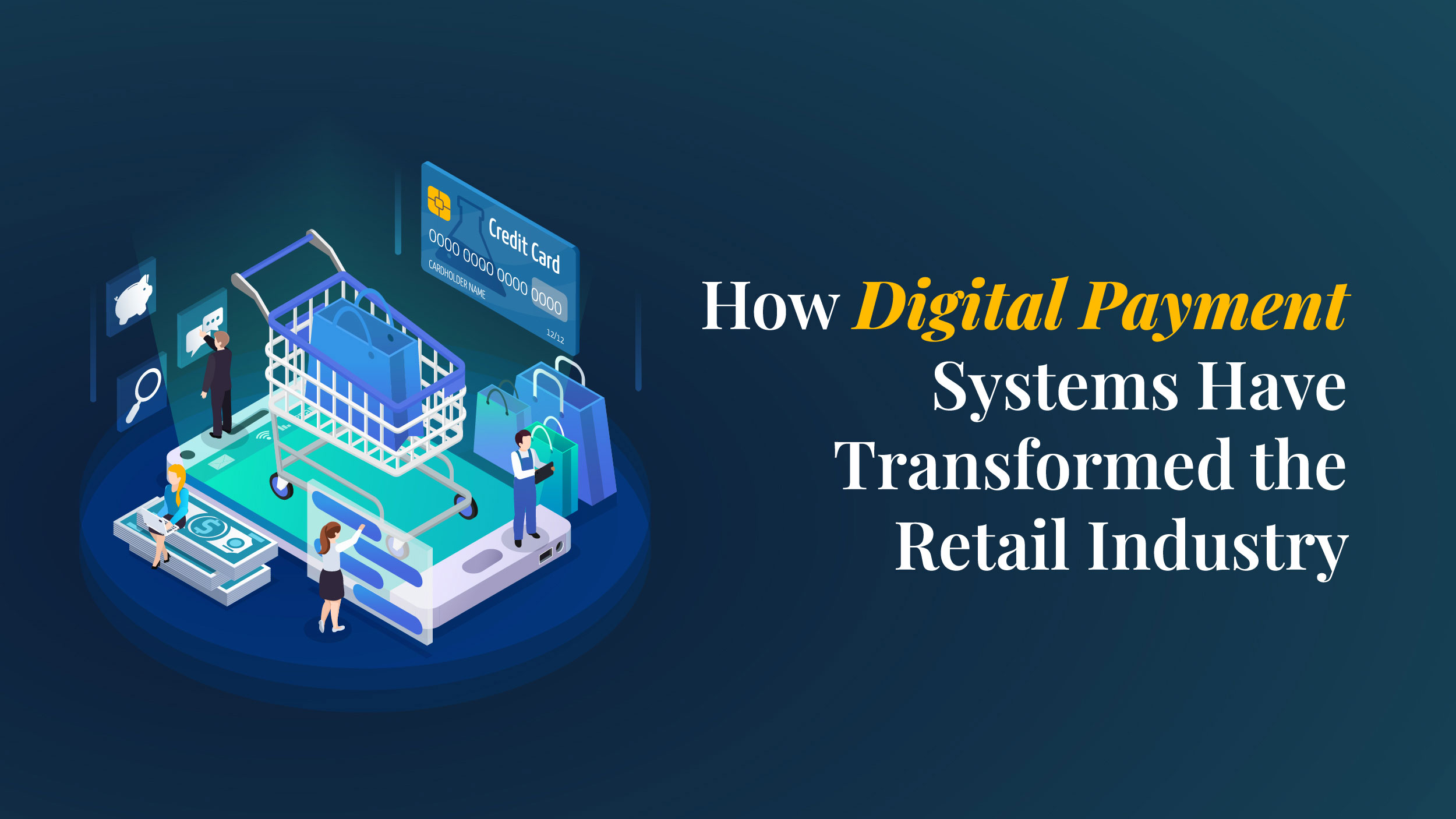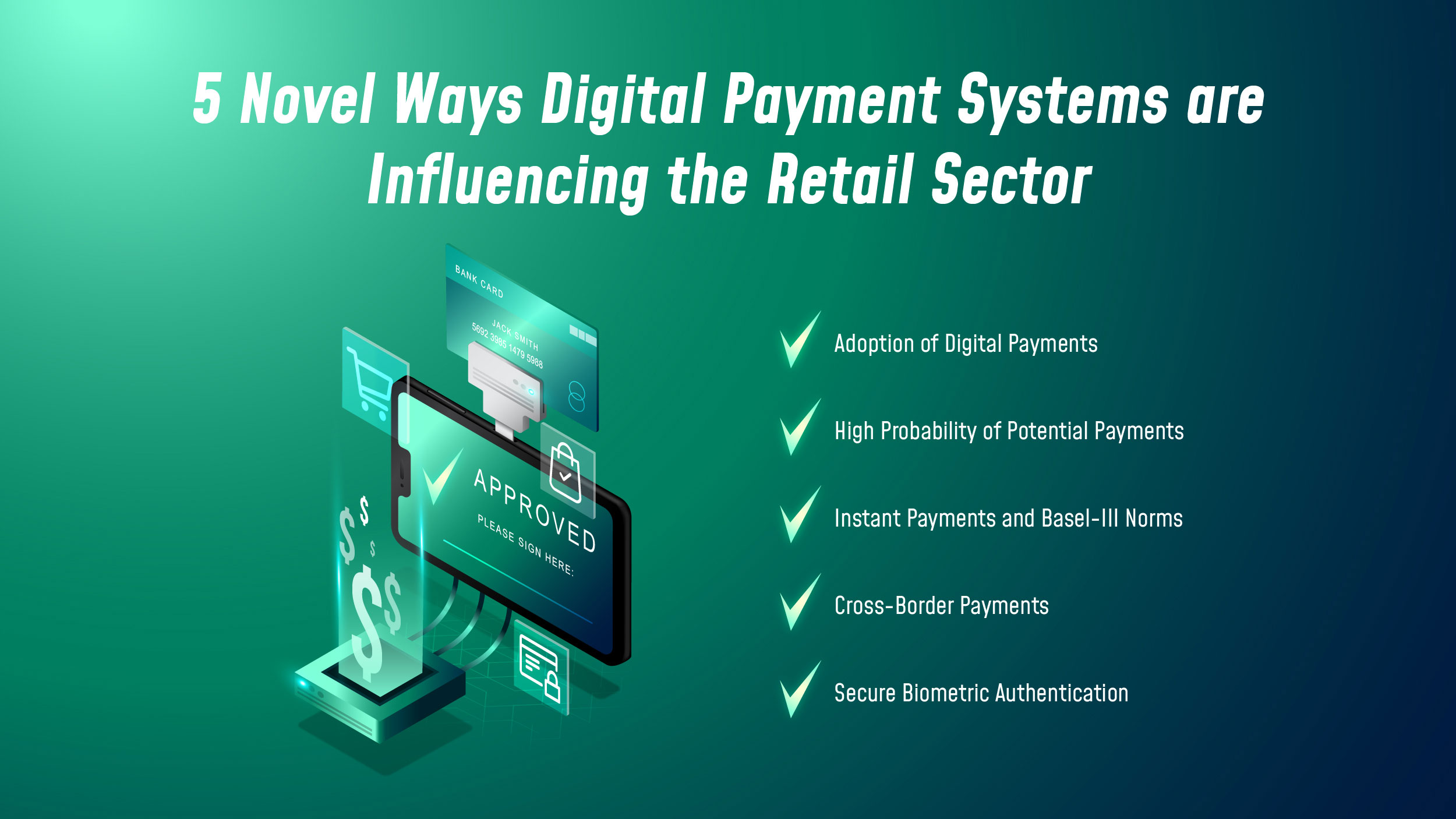Gone are the days of fumbling for your wallet, digging through piles of loose change, and worried about keeping track of your credit cards. If you are looking for seamless, convenient, and easy transactions at the touch of a button, you are in the right place. Digital payment systems are rapidly transforming the way we exchange value.
Whether it’s through mobile wallets, contactless payments, or the rise of cryptocurrencies, these systems are giving us a new era of financial freedom and convenience. The Great Payments Disruption cannot be ignored by banks, credit unions, or other financial organizations given that two-thirds of adults globally now make or receive digital payments. The real question is, are you ready to embrace a cashless future? Let’s step into the realm of online payment and understand their impact on the retail space.
How Digital Payment Systems Have Transformed the Retail Industry

Digital payments have had a notable impact on enhancing security measures adopted by customers. By leveraging advanced encryption and security technology, these systems bolster transaction security and fraud protection. Consequently, the risk of fraud and other security concerns has significantly diminished, instilling customers with a sense of tranquility when conducting digital transactions.
Given below are the 3 major benefits of digital payment systems:
· Enhanced Customer Experience
Digital payments have improved consumer experience in the retail sector. Customers can now execute transactions fast and effortlessly without having to carry real payment cards or currency with them. This has contributed to a reduction in the time and effort required to complete transactions, resulting in a more enjoyable shopping experience for customers. Furthermore, online payments have enabled shopkeepers to provide customers with a broader selection of payment options. Online payments methods such as Google Pay, and Paytm, digital credit card payment systems, and contactless payments can be used to facilitate transactions swiftly and securely.
· Improved Sales and Revenue
Digital payments have proven to be advantageous not only for consumers but also for retailers. Customers are more likely to complete transactions using online payment options, resulting in increased sales and revenue for shops. Furthermore, these payments have made it easier for businesses to observe and analyze client behavior, helping them enhance their sales strategy.
Retail leaders such as Walmart, Amazon, Kroger, and Alibaba have expanded their enterprise digital wallets to enable customers to make direct payments and eliminate the need for payment card intermediaries, which has benefited them in gaining huge revenue.
· Expansion of Consumer Base
Online payments have facilitated firms in expanding their reach to new clients, particularly those who prefer online or mobile shopping. As a result, the consumer base has expanded significantly, enabling organizations to flourish in today’s digital era. By offering online payment options, retailers can attract customers who might not have been able to shop with them otherwise.
5 Novel Ways Digital Payment Systems are Influencing the Retail Sector

Let’s discuss the 5 prominent online payment trends that are set to transform the retail sector in the coming years:
1. Adoption of Digital Payments
Customer demand for electronic and mobile commerce, as well as contactless devices such as wearables, wallets, mobile phones, and cards, has fueled the adoption of these new digital technologies. With the introduction of quicker and more secure mobile devices, customers have begun to expect more efficient and speedier payment solutions.
Another factor driving adoption is the downward pressure on merchant costs charged by card processing providers, as well as the rise of cheaper alternatives supplied by fintech companies like Uber.
2. High Probability of Potential Payments
The availability of fast payments has resulted in a new customer requirement. The payment environment has also been shaken by the adoption of the Second Payment Services Directive (PSD2), with new instant payment providers, such as e-wallets, having the potential to emerge as a viable alternative to existing payment instruments. Immediate access to funds and ease of use are two important factors driving instant payment adoption.
3. Instant Payments and Basel-III Norms
The adoption of immediate or instant payments, such as SWIFT GPI and real-time payment schemes, is projected to boost liquidity and reduce reconciliation times, resulting in speedier order fulfillment across the payment cycle.
Through longer-term funding of assets, the Basel III rules strive for greater liquidity, as there is a growing need to monitor the level of liquid assets required to cover future liquidity needs and increase banks’ ability to resist liquidity shocks.
4. Cross-Border Payments
Cross-border remittances are expected to expand rapidly as blockchain, cryptocurrency, and other alternative payment providers become more widely available. Global trade flows are expected to quadruple to $85 trillion by 2025, according to Capgemini’s Top 10 digital payments trend forecasts. Emerging economies will drive this growth.
The proliferation of the Internet and digital technologies is also driving the need for businesses to streamline their procedures in order to keep up with the increasing speed and volume of international trade transactions.
5. Secure Biometric Authentication
Biometrics is a one-of-a-kind method of ensuring safety and security in the online payments ecosystem. This type of authentication includes heartbeat analysis, fingerprint scanning, facial recognition, and iris recognition, among others.
It is a very secure strategy that aids in the boosting customer trust and loyalty. With rising occurrences of identity theft and payment frauds, biometric authentication is an excellent solution to assure the dependability and security of all online payment systems.
What Does the Future Offer for Digital Payment Systems?
The future of digital payments is an exciting and dynamic landscape that promises to revolutionize the way we handle our financial transactions. With technological advancements driving innovation, we can look forward to a future where convenience, security, and accessibility are at the forefront of every payment.
These systems offer a world of possibilities where our smartphones, wearables, and even biometrics become powerful tools for seamless and secure transactions. But this is just the beginning. As we move forward, we can anticipate groundbreaking developments in areas such as contactless payments, peer-to-peer transactions, and the integration of cryptocurrencies.
Furthermore, the future of online payments holds immense potential for financial inclusion. As more people gain access to smartphones and internet connectivity, digital payment systems can empower individuals in underserved communities, unlocking opportunities for economic growth and financial empowerment.




